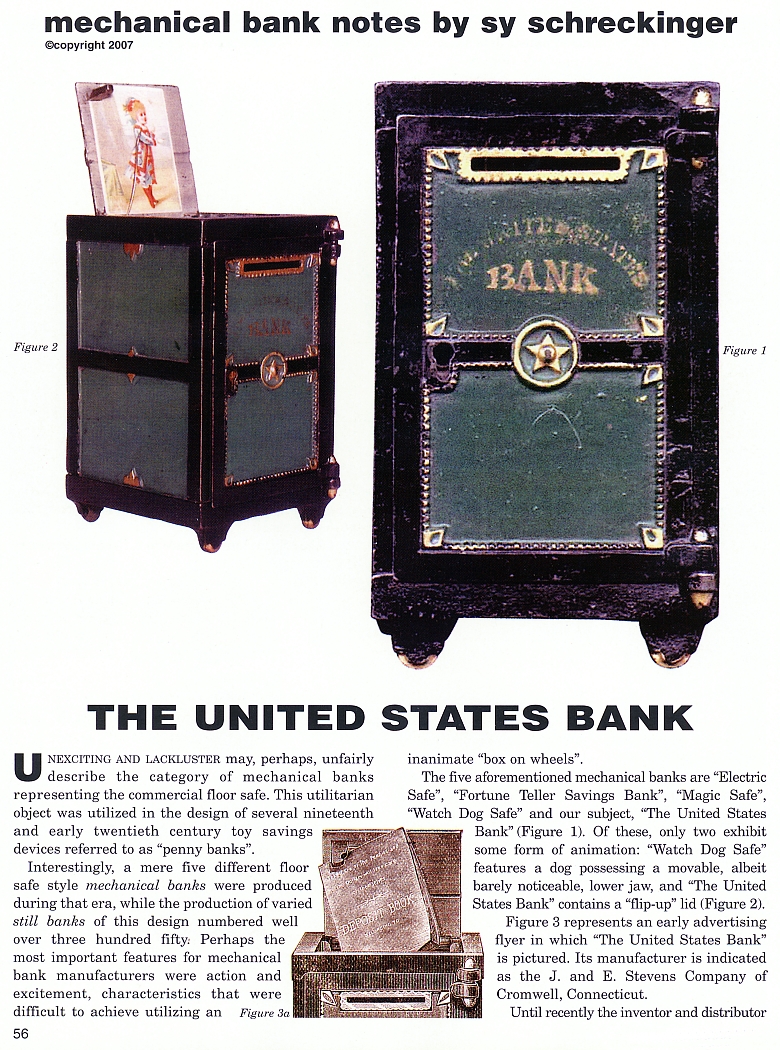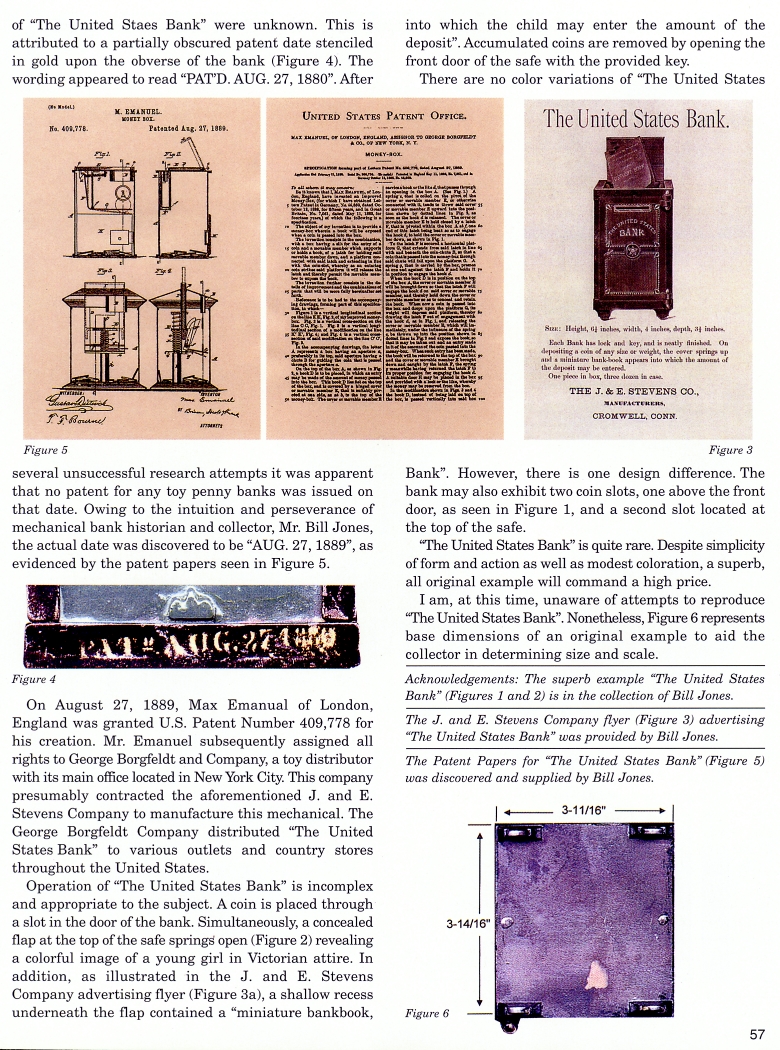|
The United States Bank
by Sy Schreckinger – ANTIQUE TOY WORLD Magazine – June, 2007
Unexciting and lackluster may, perhaps, unfairly
describe the category of mechanical banks representing the commercial
floor safe. This utilitarian object was utilized in the design of several
nineteenth and early twentieth century toy savings devices referred to as
"penny banks".
Interestingly, a mere five different floor safe style mechanical
banks were produced during that era, while the production of varied still
banks of this design numbered well over three hundred fifty. Perhaps the
most important features for mechanical bank manufacturers were action and
excitement, characteristics that were difficult to achieve utilizing an
inanimate "box on wheels".
The five aforementioned mechanical banks are "Electric Safe",
"Fortune Teller Savings Bank", "Magic Safe", "Watch Dog Safe" and our
subject, "The United States Bank" (Figure 1). Of these, only two exhibit
some form of animation: "Watch Dog Safe" features a dog possessing a
movable, albeit barely noticeable, lower jaw, and "The United States Bank"
contains a "flip-up" lid (Figure 2). Figure 3 represents an early
advertising flyer in which "The United States Bank" is pictured. Its
manufacturer is indicated as the J. and E. Stevens Company of Cromwell,
Connecticut.
Until recently the inventor and distributor of "The United States
Bank" were unknown. This is attributed to a partially obscured patent date
stenciled in gold upon the obverse of the bank (Figure 4). The wording
appeared to read "PAT'D. AUG. 27, 1880". After several unsuccessful
research attempts it was apparent that no patent for any toy penny banks
was issued on that date. Owing to the intuition and perseverance of
mechanical bank historian and collector, Mr. Bill Jones, the actual date
was discovered to be "AUG. 27, 1889", as evidenced by the patent papers
seen in Figure 5.
On August 27, 1889, Max Emanual of London, England was granted U.S.
Patent Number
409,778 for his creation. Mr. Emanuel subsequently assigned
all rights to George Borgfeldt and Company, a toy distributor with its
main office located in New York City. This company presumably contracted
the aforementioned J. and E. Stevens Company to manufacture this
mechanical. The George Borgfeldt Company distributed "The United States
Bank" to various outlets and country stores throughout the United States.
Operation of "The United States Bank" is incomplex and appropriate to
the subject. A coin is placed through a slot in the door of the bank.
Simultaneously, a concealed flap at the top of the safe springs open
(Figure 2) revealing a colorful image of a young girl in Victorian attire.
In addition, as illustrated in the J. and E. Stevens Company advertising
flyer (Figure 3a), a shallow recess underneath the flap contained a
"miniature bankbook, into which the child may enter the amount of the
deposit". Accumulated coins are removed by opening the front door of the
safe with the provided key.
There are no color variations of "The United States Bank". However,
there is one design difference. The bank may also exhibit two coin slots,
one above the front door, as seen in Figure 1, and a second slot located
at the top of the safe.
"The United States Bank" is quite rare. Despite simplicity of form
and action as well as modest coloration, a superb, all original example
will command a high price.
I am, at this time, unaware of attempts to reproduce "The United
States Bank". Nonetheless, Figure 6 represents base dimensions of an
original example to aid the collector in determining size and scale.
Acknowledgements: The superb example "The United States Bank"
(Figures 1 and 2) is in the collection of Bill Jones.
The J. and E. Stevens Company flyer (Figure 3) advertising "The
United States Bank" was provided by Bill Jones.
The Patent Papers for "The United States Bank" (Figure 5) was
discovered and supplied by Bill Jones.
|


